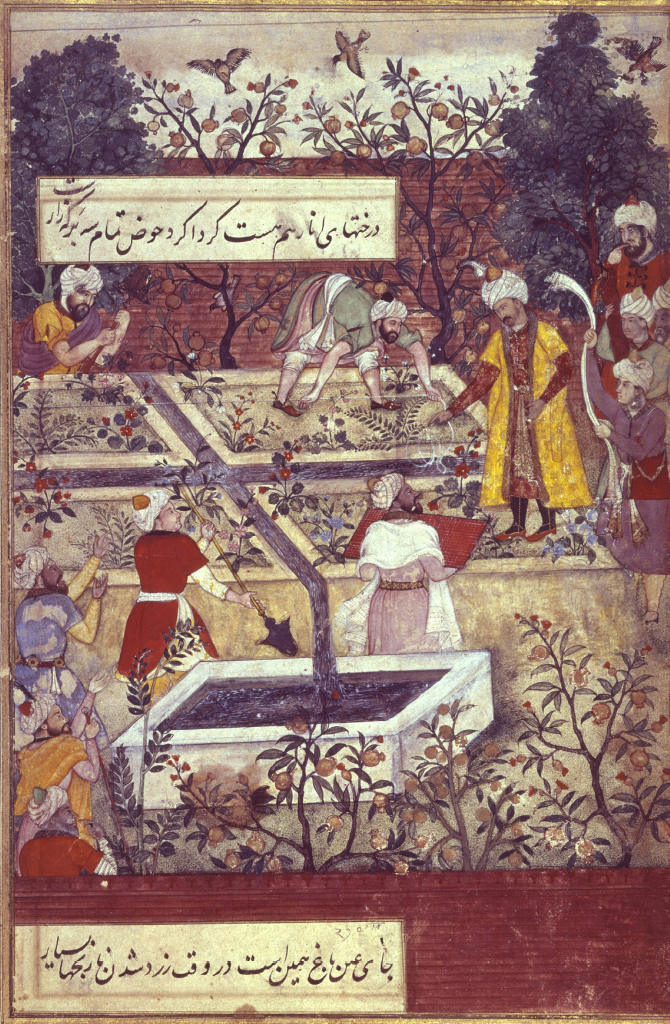Document 17-3: Babur and His Architect Plan the Bagh-i-Wafu (ca. 1590)
A Mughal Emperor Plans a Persian Garden
Babur (r. 1483–

READING AND DISCUSSION QUESTIONS
- What practical purposes might such gardens have served? What clues are offered in this image?
- Why might Mughal rulers have wanted to be seen as the primary creators of their gardens? What political purposes might such associations have served?
- What does this garden suggest about Islamic ideas about nature? About natural beauty?